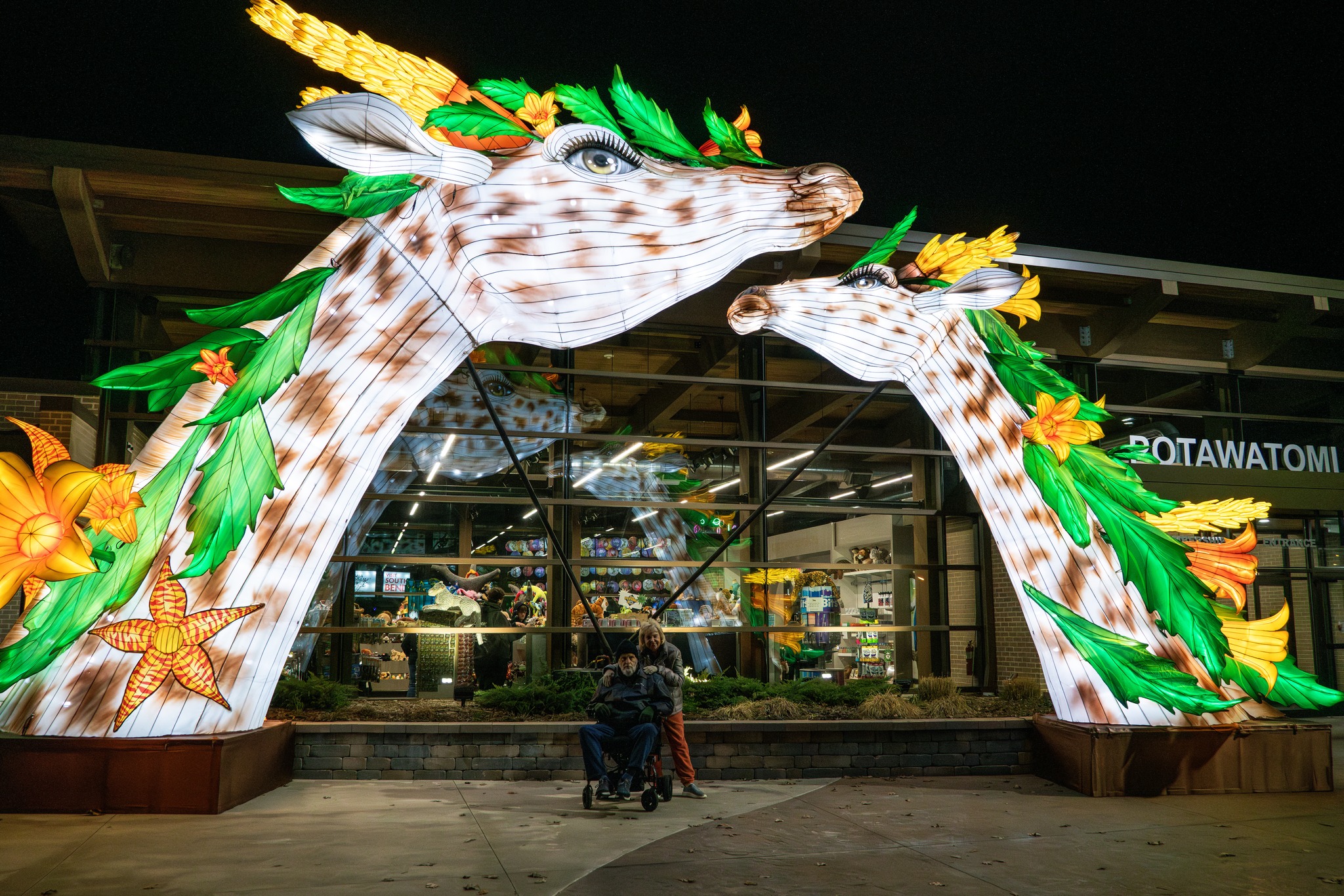- Explore the architectural highlights and photo spots of Zoo Luminate.
- Discuss the educational and conservation opportunities at Zoo Luminate and their impact on wildlife preservation.
- Provide a detailed overview of Zoo Luminate’s schedule and visitor tips.
- Connect zoology concepts with Zoo Luminate’s attractions to enhance public understanding of animal behavior and ecosystems.
- Highlight the role of zoos in modern wildlife conservation efforts, emphasizing the significance of environmental education.
Zoo Luminate is a captivating event that offers more than just a spectacle of lights. It’s a vibrant experience where architecture meets nature, providing a haven for photographers and conservation enthusiasts alike. From its iconic giraffe gate to the mesmerizing lotus seats, each photo spot carries its own charm, inviting visitors to capture the essence of wildlife artistry.
The giraffe gate stands as an entrance emblem, perfectly blending art and zoology. Standing beneath this towering structure, visitors are instantly immersed in a world that celebrates the magnificence of the tallest land animals. This spectacle isn’t just about aesthetics; it creates an immediate link to the fascinating biology of giraffes. Giraffes are known for their long necks, an adaptation that allows them to feed on foliage in taller trees beyond the reach of other herbivores. This adaptation not only highlights the species’ evolutionary uniqueness but also underscores the importance of habitat preservation, as they rely heavily on specific ecosystems.
Moving onward, the lotus seats beckon with their serene representation of water bodies. These tranquil features are inspired by one of nature’s most symbolic plants, which thrive in murky waters yet bloom with unparalleled beauty. Such installations remind us of the importance of aquatic environments in sustaining biodiversity. Freshwater ecosystems are critical habitats for countless species, yet they are often threatened by pollution and climate change, making conservation efforts around such environments even more urgent.
Continuing along the path, the moon swings offer an opportunity for creative captures. Whether it’s under the actual moonlight or the crafted luminescence of the exhibition, this spot provides a playful blend of nature and human creativity. It’s a platform to discuss nocturnal behaviors of wildlife, illustrating how many species are adapted to life under the moon. The moon’s cycles affect animal behaviors across continents, influencing migration patterns, predator-prey dynamics, and mating rituals.
However, many visitors agree that the lantern tunnel at the entrance is a highlight of Zoo Luminate. Taking that initial step through this luminous bridge serves as a gateway into a rich exploration of ecosystems and life sciences. Each glowing lantern showcases different themes, from forest biomes to arctic landscapes, offering educational insights into each environment’s role in wildlife survival. This immersive experience acts as a gentle nudge towards appreciating the importance of diverse habitats supported by a global initiative to mitigate human impact on these areas.
Zoo Luminate is not just an aesthetic journey but an educational one, emphasizing the role of zoos in wildlife conservation. Modern zoos like Potawatomi Zoo, the home of Zoo Luminate, focus on research, breeding programs, and community education. These institutions strive to bridge the gap between humans and the natural world, fostering appreciation and understanding of wildlife and their habitats. With events like Zoo Luminate, zoos can further stress the urgency of conservation in the midst of a rapidly changing environment.
Combining entertainment with education, Zoo Luminate is open from 6 to 10 pm, providing ample opportunity for families and tourists to delve into the experience. This spring break, the event is an ideal destination for those interested in both zoology and photogeneity, offering a peculiar chance to see animals and their artistic representations side by side. Visitors should ensure to bring cameras and plenty of memory space to capture the beauty that unfolds at night. It’s these captured moments that participants will take home, serving as personal reminders of the crucial connection between conservation and community involvement.
Moreover, events like Zoo Luminate prompt a larger conversation about the ethical role of zoos and their responsibility towards wildlife. While traditional zoos emphasized captivity for display, contemporary zoos now prioritize environmental enrichment and animal welfare. They have become key players in breeding endangered species, educating the public, and rehabilitating wildlife. The educational encounters provided by Zoo Luminate spur curiosity and promote active participation in conservation efforts.
Exploring Zoo Luminate offers visitors a chance to deepen their understanding of ecological concepts in a novel way. Each display and activity becomes a stepping stone for learning about animal adaptations, natural history, and the balance of ecosystems. As you stroll through the event, these lessons layer with each exhibit, reinforcing ideas about biodiversity, environmental responsibility, and human interaction with the wild.
In visiting Zoo Luminate, attendees are not merely spectators but participants in a global conservation movement. The experience encourages responsibility and action, challenging visitors to consider their role in ensuring a sustainable future for all species. The vibrant photo spots and themed installations serve as more than just backdrops but as crucial elements in a broader narrative of ecological stewardship.
*****
Source Description
Where’s your favorite Zoo Luminate photo spot? Is it the giraffe gate? The lotus seats? The moon swings? Personally, we love the lantern tunnel right at the beginning! It’s such a beautiful way to start the Zoo Luminate adventure.
This week, Zoo Luminate is open 6-10 pm from Sunday through Sunday, so if you’re in town for Spring Break, check it out!
potawatomizoo.org/zooluminate


